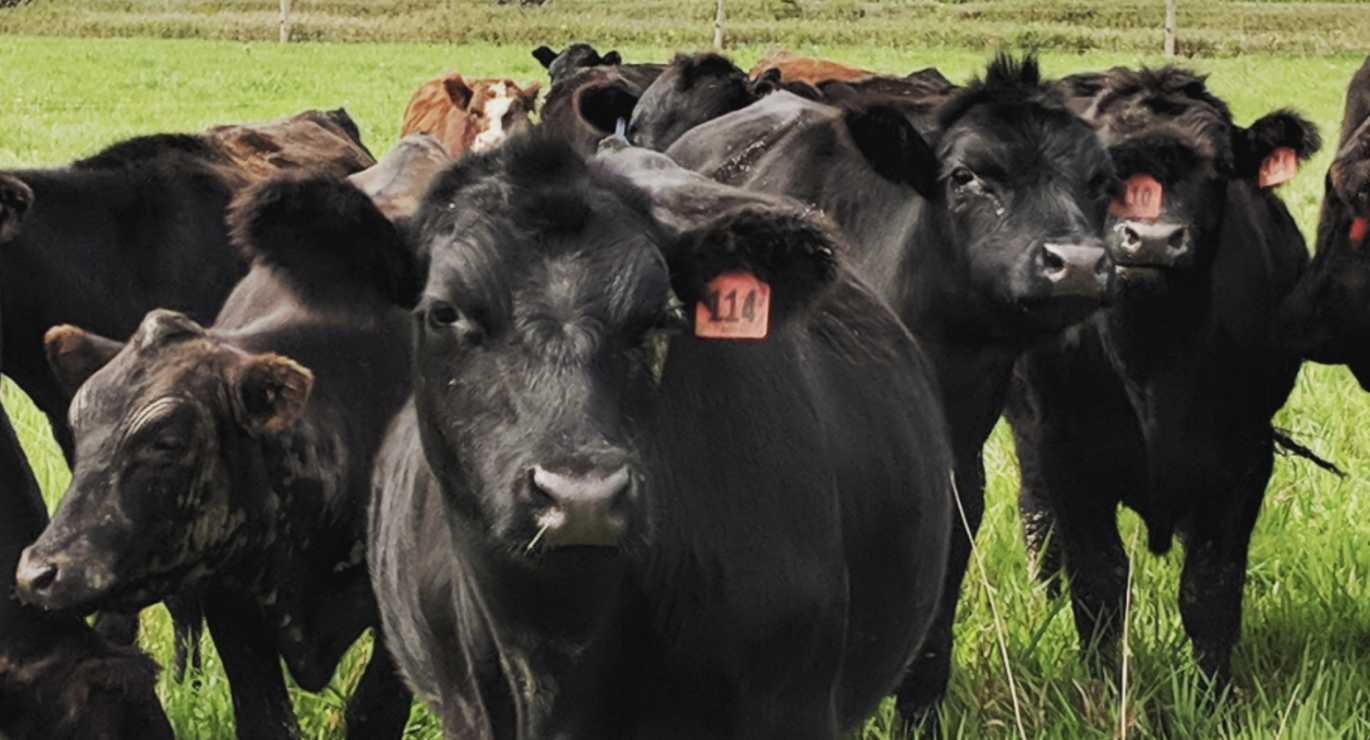Get $60 OFF throughout your first 2 boxes with code HOLIDAY60.
Offer ends in ::
Set your location to shop products local to you.
NIKU Farms
Thank you for your feedback!
If you requested further assistance, you’ll receive an email confirmation and we’ll follow up within 24 hours.
Got more questions? Start a new chat.
End chat
Are you sure you want to end the chat?
Cancel
Are you sure?
Your response has not been submitted. To process your request for further assistance, please hit the 'Back' button below, complete the form and submit your request.
Close Chat
There is ongoing debate about grass-fed over grain-fed meat. Some claim grass-fed to be a fad, while others note that there are nutritional benefits with grass fed beef that are not found in grain fed beef. But with so much speculation we decided to turn to science for more definitive truths. We reached out to University of Toronto professor, Dr. Richard Bazinet to understand what nutritional differences he uncovered in his lab between grass-fed and grain-fed steaks. [You can also listen to our full interview with professor Bazinet, in our podcast below]
Dr. Richard Bazinet is a neuroscientist in the department of nutrition. But he turned from studies of the brain to studies of steak when renowned author Mark Schatzker approached him with a challenge: grass fed beef is better for you than grain fed beef. At the time, and still today, there is not much awareness about the nature of the beef that comes to you from grocery stores. The majority of meat available at the grocery store is considered “commodity beef” that was raised in a factory farm and fed on corn. This is why, even the neuroscientist initially turned away Schatzker’s proposal questioning, “don’t all cows eat grass?”. That may have been true years ago, but today it is quite the opposite. It’s harder to find cattle fed purely on grass than cattle fed purely on grain.

In the end, Professor Bazinet took Mark Schatzker up on the challenge. He had an expensive piece of equipment in his lab called a chromatograph that can test for fatty acid composition of organic material. Using this machine he tested the composition of two types of meat: meat from a grass fed cow, and meat from a grain fed cow.
The results? First let’s refresh on what are the two types of fatty acids we’re talking about. One is commonly known as Omega-6, the other as Omega-3. While the benefits or harm of Omega 6 fatty acids is widely debated. It suffices to say that we get more than enough Omega-6 in our diets today. What is harder to come by in our diets is Omega-3 fatty acids. This is the “good fat” and “brain food” praised by nutritionists and found commonly in foods like fish. The more Omega-3 fatty acids you can get into your diet, the better.
Professor Bazinet’s lab tests found that grain fed steak had more Omega-6 fats than Omega-3 fats. The ratio for corn fed steak’s Omega-6 to Omega-3 ratio is about 30 to 1 (meaning for every one quantity of Omega-3, there are 30 parts Omega 6). With grass fed steak, Professor Bazinet found an Omega-6 to Omega-3 of about 6 to 1. Almost a ten-fold difference! One of the steaks he tested was from Blackview Farms, which is one of our partner farms located in Listowel, Ontario that are raising 100% grass fed beef on pasture. From these tests it is confirmed that there are significantly higher sources of Omega-3 fatty acids in grass-fed steak than there are in grain fed steak.

While this finding did surprise Professor Bazinet, what surprised him more was when he analyzed the fatty acid composition of other farmed animals. Specifically chicken. Doing the same testing that he did on the steak, Professor Bazinet analyzed the fatty acid composition of Chicken. Shockingly, the pasture raised chicken not only had more Omega-3s than commodity chicken, but it had the specific type of Omega-3 most commonly found in fish. This specific type of Omega-3 is called EPA (eicosapentaenoic acid) and DHA (docosahexaenoic acid), but more commonly called “fish oils”. The “fish oil” type of Omega-3 is even more potent in health benefits than Omega-3s found in beef! “I can say I’ve seen chicken with more fish oil than tilapia” says Professor Bazinet. It shocked him that not only were there were fish oils in pasture raised chicken, but that in commodity chicken there was virtually none of this nutritional benefit. Here are some of his findings:
Percentage of Fish Oil (EPA & DHA) in Meat Fat
As Professor Bazinet continued his investigation he saw that it was not just the

The biggest argument is that if Salmon has the most Omega-3 content, then why is the grass-fed versus grain-fed beef conversation important at all – just eat fish. But the conversation should instead be about changing our whole food system. If we were to transition to eggs, dairy, beef, pork, and chicken that were all raised on pasture, we’re getting much more Omega-3 nutritional content across the board. It’s why Professor Bazinet does not like the term ‘Superfood’, because it connotes that you can eat one food that will supplement you with all you need. He says, “Don’t eat a healthy food, eat a healthy diet”. We should improve the overall nutrition of everything we eat – and it starts with the wide open pasture.
The biggest argument is that if Salmon has the most Omega-3 content, then why is the grass-fed versus grain-fed beef conversation important at all – just eat fish. But the conversation should instead be about changing our whole food system. If we were to transition to eggs, dairy, beef, pork, and chicken that were all raised on pasture, we’re getting much more Omega-3 nutritional content across the board. It’s why Professor Bazinet does not like the term ‘Superfood’, because it connotes that you can eat one food that will supplement you with all you need. He says, “Don’t eat a healthy food, eat a healthy diet”. We should improve the overall nutrition of everything we eat – and it starts with the wide open pasture.
For us at NIKU Farms, these results are promising. Our mission is to supply only the best Pasture raised meats to your home from the farm. But many consumers still worry about labeling. Dr. Bazinet’s previous studies have shown that about 1 in 10 “Grass-Fed” labels on steaks are mislabeled. At NIKU Farms we believe that doing testing like this can help add peace of mind for consumers who wonder about the validity of “Grass-Fed” or “Pasture Raised” Claims. This year we are working with the professor to have all of our meats tested for the fatty-acid markers of pasture raised meat. Together with farms and science, we want to ensure transparency that only the best meat makes it to your family.

when you subscribe to our mailing list.